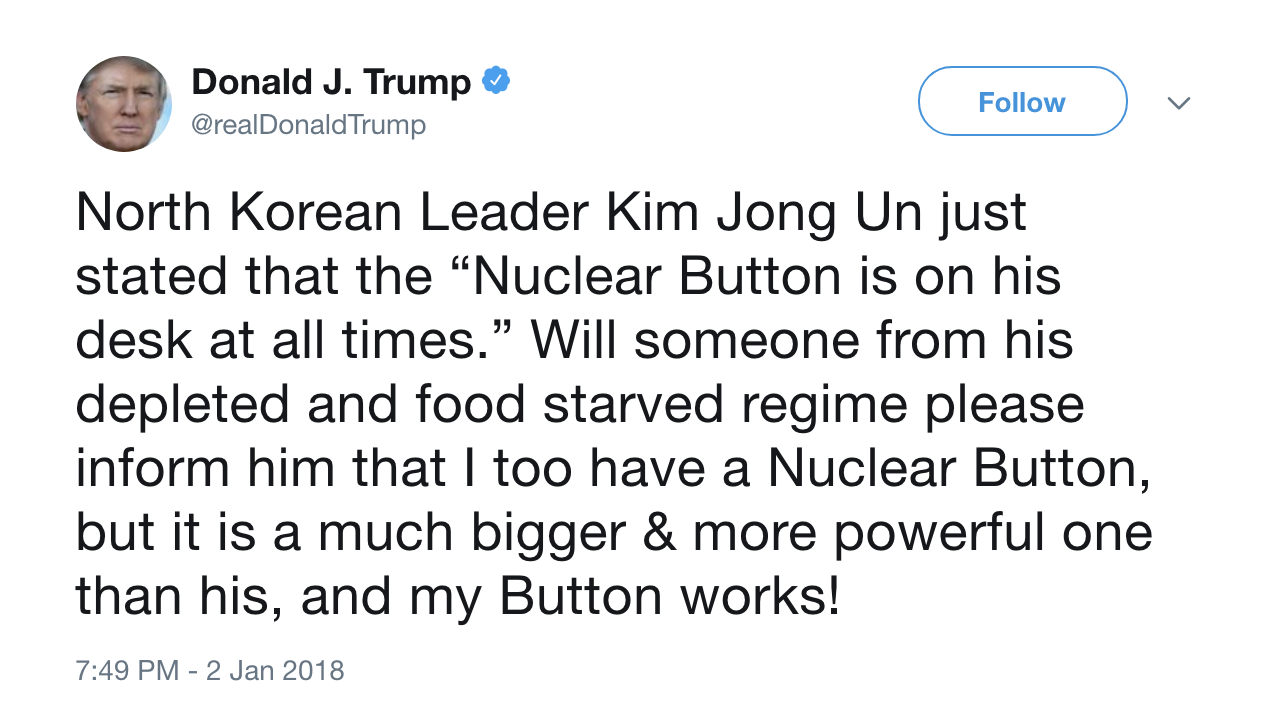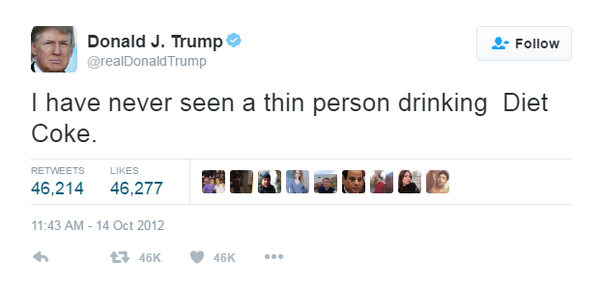A relevant ethical issue in our media now a days is consistently Donald Trump’s twitter page.
According to Chapter 6, Visual Analysis, from Visual Communication by Lester, the audience depicts the meaning of words and pictures through culture and symbols. Ethics is about right and wrong. Everyone can see it differently, especially in terms of personal and professional ethics.
Donald Trump displays an enormous amount of emotions within his tweets and these are just a few examples.


So while he is the commander in chief, he is still bitching about the troops and what they’re doing. And while he knows the terrifying feelings and intense struggles the United States has had with North Korea, he tweet about how his capital B, button is bigger than Kim Jong Un. I feel as though he is always trying to prove something. In thinking of ethics, how we should behave is a lot different, for some, than how we do behave. These days, with technology and media being so relevant, it’s easy to talk online without thinking it has negative consequences, when in reality that’s the opposite, especially as a celebrity and politician as powerful and influential as Trump.
 “I SWAR I KNOW THA DIFFRENCE BATWEEN RIGH AND WRONG”
“I SWAR I KNOW THA DIFFRENCE BATWEEN RIGH AND WRONG”

For shits and gigs.
Thanks for tuning in.
References:
Lester, P. M. (2014). Visual communication: Images with messages (6th ed.). Boston, MA: Wadsworth/Cengage Learning.

1 comments
I agree with you on your idea that Trumps display a lot of emotion with his tweets. I think Trumps speaks to his audience in a way that can be understood. I don’t think Trumps tweets are meant to mean anything more than his just blowing off steam. Like the way most people talk to each other we don’t speak professionally. According to chapter 1 of the book, Ethical Responsibility in Human Communication, “to secure acceptance, some communicators adapt to an audience to the extent of so changing their ideas that the idea is no longer really theirs”( Johannesen, Valde, &Whedbee, 2018. pp. 3)